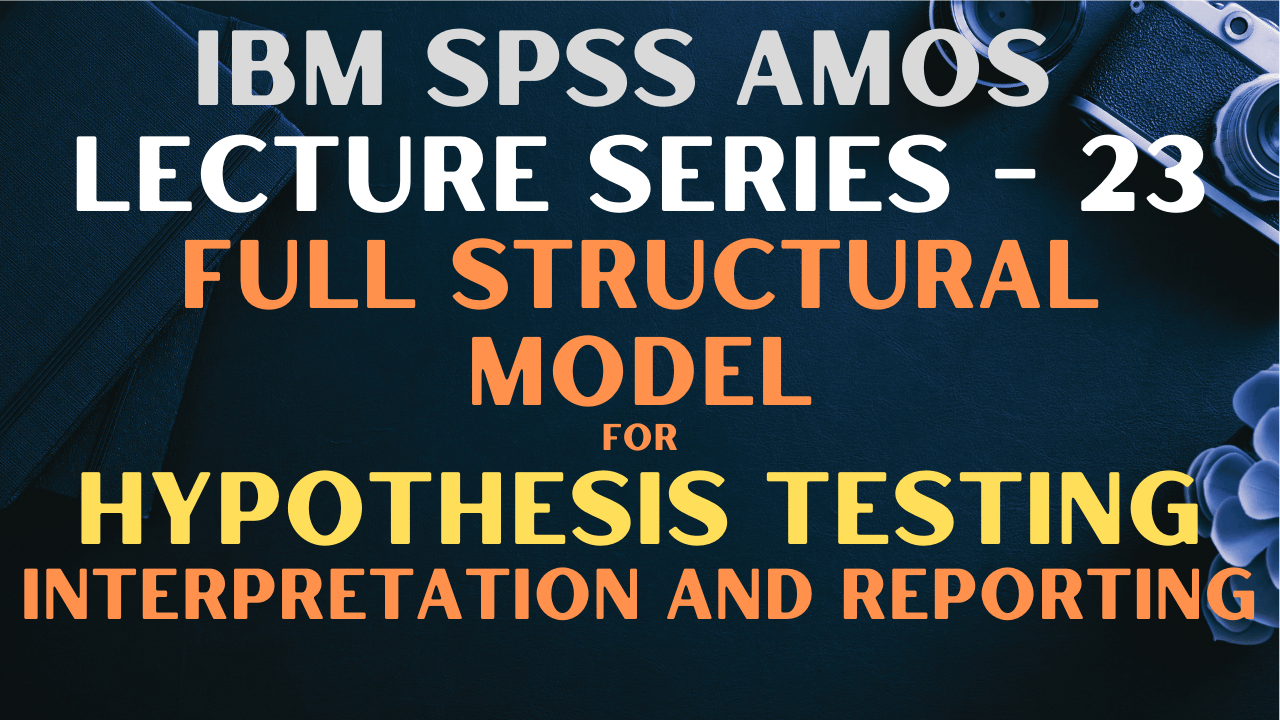
Full Structural Model Analysis
The Focus of the video tutorial is guiding how to designing, interpreting, and reporting a full structural model in SPSS AMOS.

The Focus of the video tutorial is guiding how to designing, interpreting, and reporting a full structural model in SPSS AMOS.
A brief Review of the Output
Analyzing the Model Fit
Structural Model Results are reported in two steps.
A structural equation model generated through AMOS was used to test the relationships. A good-fitting model was accepted if the value of the CMIN/df, the goodness-of-fit (GFI) indices (Hair et al., 2010); the Tucker and Lewis (1973) index (TLI); the Confirmatory fit index (CFI) (Bentler, 1990) is ⩾ 0.90 (Hair et al., 2010). In addition, an adequate-fitting model was accepted if the AMOS computed value of the standardized root mean square residual (RMR) < 0.05, and the root mean square error approximation (RMSEA) is between 0.05 and 0.08 (Hair et al., 2010). The fit indices for the model shown in Table 1 fell within the acceptable range: CMIN/df = , the goodness-of-fit (GFI) = , TLI = , CFI = , SRMR = , and RMSEA = .
The squared multiple correlation was ______ for life satisfaction, this shows that _______ variance in life satisfaction is accounted by ____________ and ________________.
The study assessed the impact of authentic and ethical leadership on life satisfaction. The impact of Authentic Leadership on life satisfaction was positive and significant (b= _____, t = _____, p < _____), supporting H1. The impact of Ethical Leadership on self-efficacy was positive and significant (b= _____, t = _____, p < _____), supporting H2. Model fit indices and Hypotheses results are presented in Table 1.